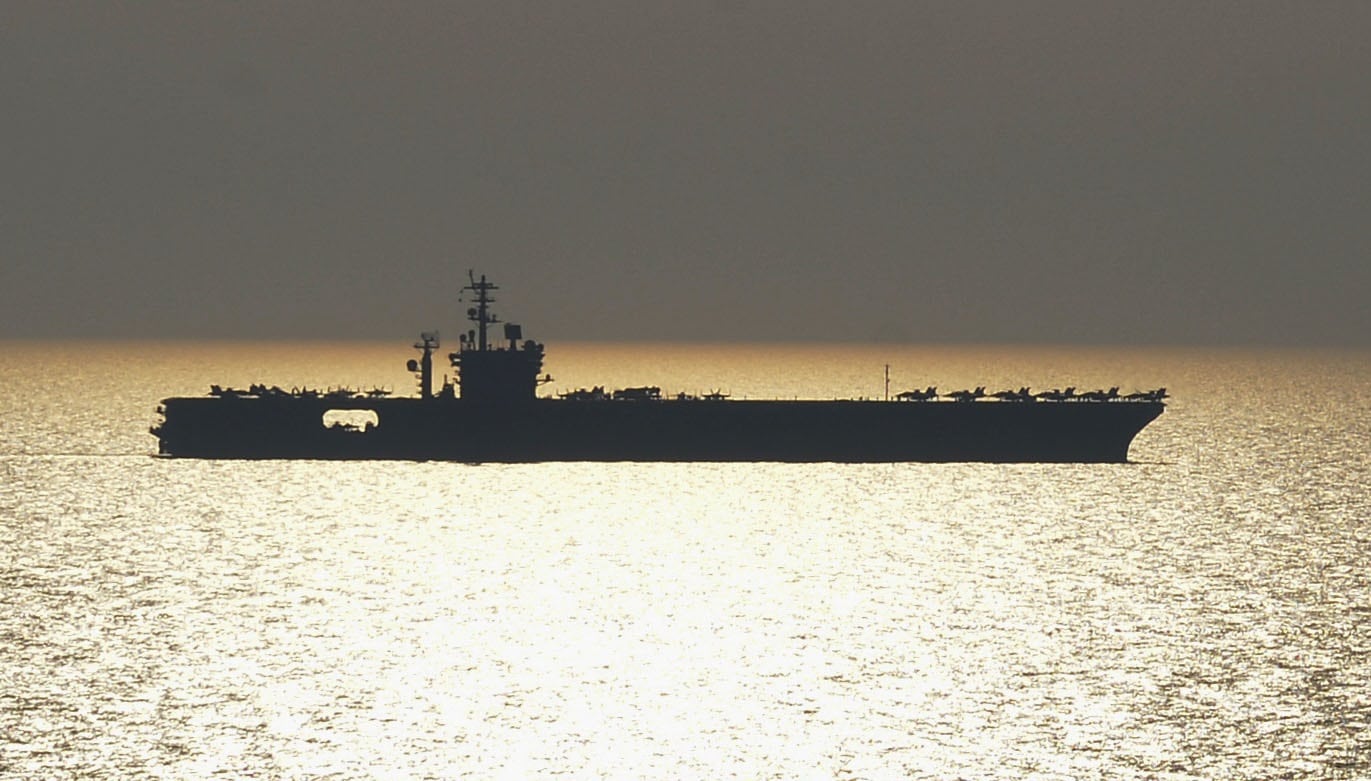171017-N-XU691-059 ARABIAN GULF (Oct. 17, 2017) The aircraft carrier USS Nimitz (CVN 68) transits the Arabian Gulf, Oct 17, 2017. Nimitz is deployed in the U.S. 5th Fleet area of operations in support of Operation Inherent Resolve. While in this region, the ship and strike group are conducting maritime security operations to reassure allies and partners, preserve freedom of navigation, and maintain the free flow of commerce. (U.S. Navy photo by Mass Communication Specialist Seaman David Claypool/Released)
When first launched, the Nimitz-class aircraft carrier was the biggest warship ever built. With a displacement of over 100,000 tons and a length stretching beyond one thousand feet, the Nimitz is indeed massive, requiring a 5,000-person crew to operate. The Nimitz will gradually be replaced when the Ford-class carriers are completed in the upcoming years – but for now, all ten Nimitz carriers ever built are still proudly in service.

The Nimitz Carries its Class
First commissioned in 1975, the Nimitz was intended to supplement then-serving carrier classes, the Kitty Hawk, Forrestal, and Enterprise. The carrier incorporated several improvements over preceding classes. For example, the Nimitz has just two economical nuclear reactors. The Enterprise, on the other hand, relied on eight space-consuming reactors. The result is more available space and more carrying capacity; the Nimitz can lug 90 percent more aviation fuel and 50 percent more ordnance than the 50s-made Forrestal.
The U.S. Navy also claims that the carrier could handle three times more damage than the World War II-era Essex-class carrier. On this aircraft carrier, the airplane hangars are divided into three distinct fire bays. Each fire bay features dense steel doors specially created to stop fires from spreading.
Ten Nimitz-class carriers were built – all between 1968 and 2006, all at Newport News Shipbuilding yard in Newport News, Virginia. The ships are propelled by two A4W nuclear reactors, which are housed in compartments separate from one another. Nuclear fission heats water, which generates steam. The steam then passes through the four turbines and spins the ship’s four propeller shafts, which can propel the leviathan to speeds beyond 30 knots. Each propeller, made from bronze, has a 25-foot diameter and weighs over 30 tons. The nuclear-powered Nimitz can operate continuously for over 20 years without ever having to refuel.





